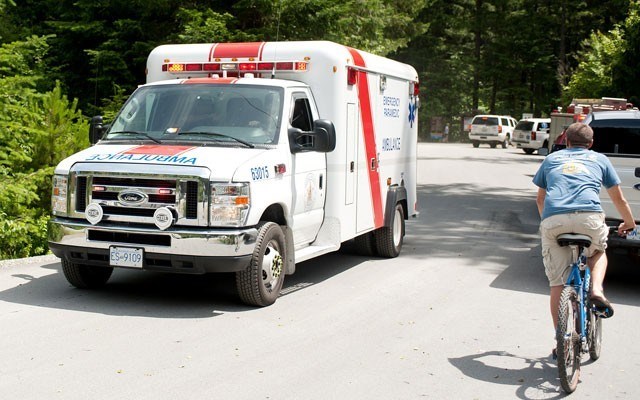An ambulance from Whistler was recently forced to come down to address a potentially serious call in Squamish, according to the Ambulance Paramedics and Emergency Dispatchers of BC.
"That was presumably a 35-to-a-40 minute response time for a life-threatening situation, which is not ideal, obviously," said Cameron Eby, the president of the union.
He said one of the Squamish vehicles was out of service March 22 due to a lack of staff, which is what forced the Whistler ambulance to come down south.
He said there are two ambulances in Squamish, so having one out of service represents a 50-per-cent drop in capacity.
It was just one example of how paramedic staffing levels have been affecting service in the Sea to Sky, he said.
On the other hand, BC Emergency Health Services, or BCEHS, did not provide a direct response to what happened on March 22, but said the Sea to Sky area is fully staffed, as it has almost 100 paramedics.
Squamish, the organization says, has two ambulances that operate seven days a week.
"We do from time to time face staffing challenges, which mean ambulances are out of service, rather than just temporarily tied up but staffed," wrote spokesperson Shannon Miller in an emailed statement. "This can be due to paramedics out sick, or additional training requirements or vacancies."
Miller also added that BCEHS has a regional deployment model, whereby ambulances can be sent from one community to assist with patients needing care in another.
"This flexibility ensures the most appropriate and closest resource available at any given time is dispatched to the patient's location based upon their condition," she wrote.
In the Sea to Sky Corridor, Miller continued, this means ambulances can be dispatched from several different stations in the region, including West and North Vancouver.
BCEHS sends the closest available ambulance as quickly as possible, she said.
However, Eby says that while there may be a large pool of paramedics that have been hired, working hours are scheduled in a way that can leave shortages.
In Squamish, only one of the ambulances during the day is staffed with full-time employees who work a regular schedule, Eby said.
Because the second ambulance and all the night shifts are entirely staffed with on-call paramedics — not regular staffers — there may only be a small number of people in the pool who can actually work those hours, he said.
"There's no reliability to that staffing model," Eby said. "And that's what needs to change."
As a result, shortages happen, he said.
"If you have more paramedics that aren't working on a regular basis that don't own a regular job, that's not solving the problem," said Eby.
The solution, he said, is to hire paramedics with regular hours, as opposed to adding to the on-call pool.
This creates consistent scheduling, he said.
There have been other recent occasions where ambulances were out of service due to staffing issues.
"Our reports include ambulances in Pemberton being out of service on two occasions in the past two weeks," he wrote in an email on March 22.
"The Sea to Sky is a challenging ambulance coverage system, with Squamish units often being pulled either north to assist in Whistler, or south to cover Lions Bay.
Having any ambulances out of service will greatly affect this and can result in Lillooet having to come over to cover Pemberton / Whistler."
Eby said in later follow-ups that one o the Squamish ambulances was out of service on March 23, as well.
"The only remaining Squamish [ambulance] was sent to North Vancouver for more of the night, so Squamish had no ambulances," he said. "We presume an ambulance from Whistler or Pemberton was moved to Squamish to cover."
More recently, on March 31, one of the two Squamish ambulances was out of service again, Eby said.
To see the original version of this story click here.




